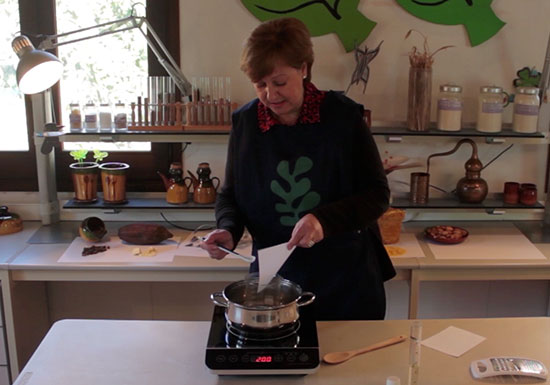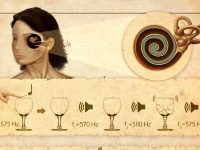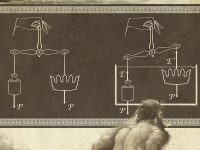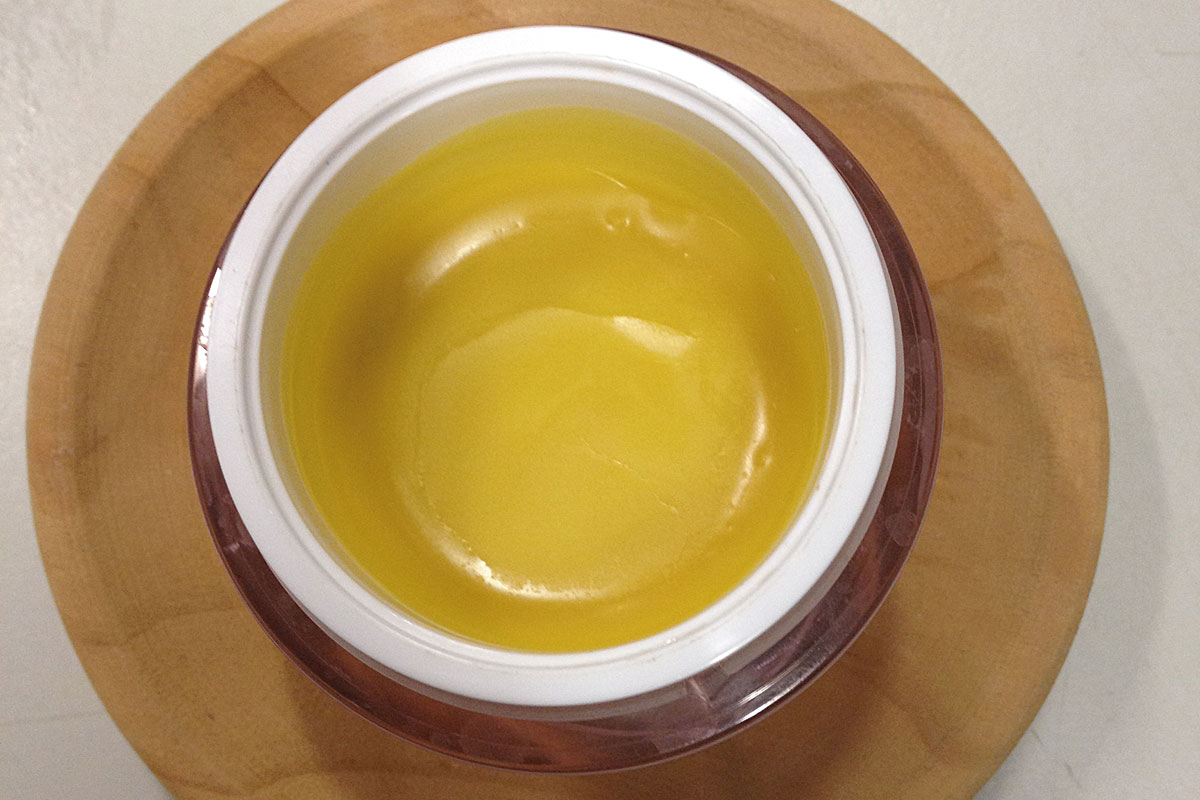
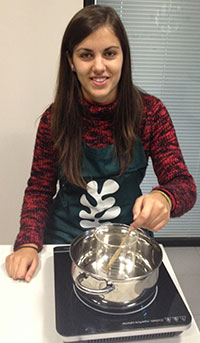
Education Unit of the Botanic Garden of the University of Valencia
First, we are fascinated by wax, extraordinary substance, with useful features for plants like a film to avoid dehydration. Although they can have different origins, the most popular is of animal origin, beeswax. There is an interesting vegetal wax, not as famous as beeswax, but also widespread. It is the carnauba wax, extracted from the young leaves of Copernicia prunifera, a palm tree known in Brazil as the tree of life. The tree is important in the food industry, among others. It is used, for instance, in the coating of the famous M&Ms. It is also used in pharmacy due to its antibiotic features, and in the past it was used to make candles and decorative objects. Nowadays, candles made from this material are only used for select events, although they have the advantage that they leave no residue when they burn.
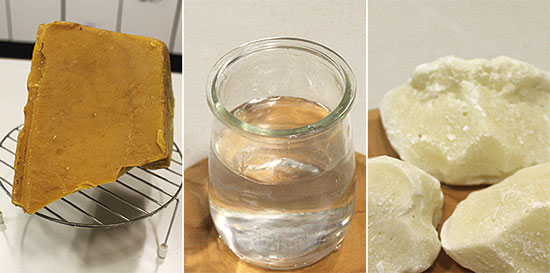
Education Unit of the Botanic Garden of the University of Valencia
Necessary materials for a natural moisturising lotion. From top to bottom: bee-wax, sweet almond oil and cocoa butter. They are clean, sustainable substances, harmless for the environment.
Sweet almond oil is another very interesting natural product that has been used for a long time. The oils from vegetal seeds are similar in size and structure to milk’s fat globules, hence their characteristics: they cover the skin, protecting it with a hydrolipidic film that facilitates hydration. It is extracted from sweet or sour almonds (the fruit of Prunus amygdalus). The oil content of dry almonds ranges from 50% to 65%, but in sour almonds it is sometimes closer to 20%. The oil from sweet almonds is used a lot in aromatherapy and in hair-care. The skin absorbs the oil quickly. It acts against itching and inflammation, and eases muscular pain almost immediately.
«Natural cosmetics are appropriate for those who suffer from allergies, skin sensitivity or other intolerances to traditional market products»
Cocoa butter, also known as Theobroma oil, represents between 50% and 60% of the total weigh of the cocoa seed, and it doesn’t contain theobromine. After roasting the seeds, they are ground and pressed to separate cocoa dust from the butter. This is the only component of cocoa that is used to produce white chocolate. The melting point of cocoa butter is slightly lower than body temperature, so it is a perfect base for lipstick and other lotions.
Activity: Moisturising Lotion
We suggest an activity with these marvellous substances: producing a moisturising lotion for skin, hands or lips.
What you need
—Natural bee-wax (5 g).
—Sweet almond oil (25 ml).
—Cocoa butter (2.5 g).
—Lavender, rosemary, sage or thyme essential oil (choose one).
—Several glass containers (you can reuse them).
—A wooden spoon.
—A big glass container for a water bath.
—A pot for the water bath.
—Water.
What to do
—Grate the wax and the cocoa butter.
—Put it in the big glass container.
—Add the oil.
—Boil the container in a water bath.
—Stir until well-blended.
—Remove from the heat.
—Cool for a while and add the drops of essence.
—Pour in the glass pots and let it cool before closing.
Guidelines
It is very easy to prepare, so you do not need to make a lot of product, even if it can be kept for a long time. You may also keep it in the fridge. We can use this natural moisturiser at any time for our hands or lips. It is not necessary to use a lot, but it must be spread thoroughly.
Watch the activity on Mètode TV

